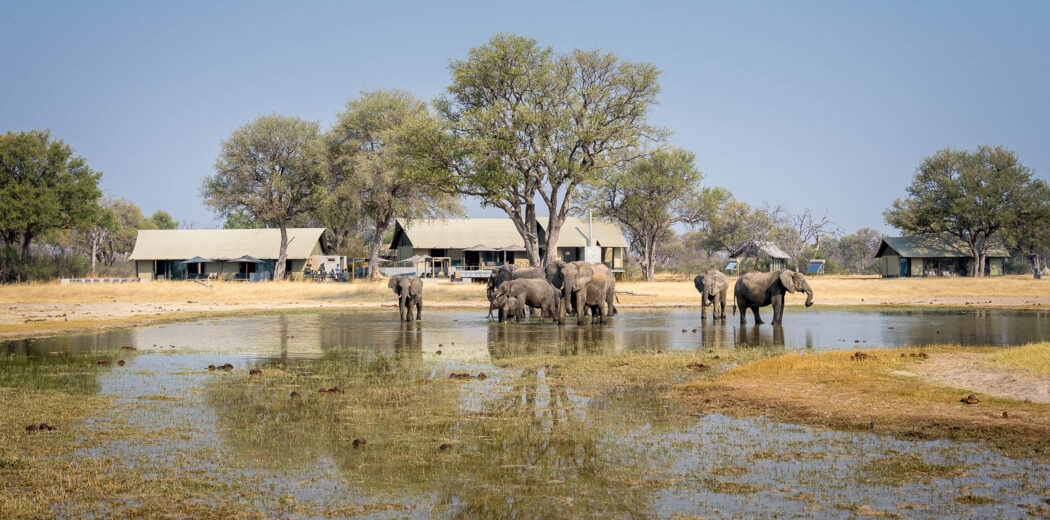Striking rock formations, rhinos, cave paintings & Cecil Rhodes
As Zimbabwe‘s oldest national park, rich in human history, sensational landscapes of towering kopjes and granite boulders haphazardly arranged into strange shapes (2 billion years old), and even a special breeding ground put aside for its white and black rhino, Matobo Hills is a magical place and a designated UNESCO World Heritage Site.
Having long been the spiritual homeland of the Ndebele people and formerly known as Rhodes Matopos National Park, its territory (44,500 hectares) is strewn with Bushmen cave paintings, as well as the graves of Ndebele king Mzilikazi and the colonialist Cecil John Rhodes (responsible for the creation of the park back in 1926).
As far as wildlife goes, Matobo is known for its white and black rhino, black eagles and having the largest concentration of leopards in all of Africa. There are no lions or elephants, making it a safe place to hike and horse ride, and it has good populations of zebra, wildebeest, giraffe, kudu, sable, and eland.
Highlights
The Park is home to a wide variety of animal species including: black and white rhinoceros, zebra, wildebeest, giraffe, kudu, eland, sable, klipspringer, leopard, hyena, cheetah, hippo, warthog, rock dassies, waterbuck, wildcat, springhare, common duiker, crocodiles, baboons and monkeys.
It has one of the highest concentrations of Black Eagle in the world. Bird species that can be found include, fish eagle, martial eagle, francolin, secretary bird, weavers, pied crow and Egyptian geese.
You can visit the graves of Cecil John Rhodes and Mzilikazi, the Ndebele King.
The Park has one of the largest concentrations of black and white rhinoceros; and has a intensive protection zone put aside for them.
See the rock paintings of Nswatugi, Bambata, Inanke, and Silozwane Caves
Matobo Hills is only 30 minutes south of Bulaweyo
Luxury accommodation in Zimbabwe
Why book with Jacada?

Safari expertise
Our experts bring decades of first-hand expertise. They’ve lived and travelled across Africa and are regularly on the ground reviewing the most exclusive camps and experiences. You’ll also have the support of a personal concierge, based in region.

Unforgettable guides
We handpick the most knowledgeable guides, who bring each destination to life with care and passion. They’re chosen for their ability to provide unrivalled insight into the region’s wildlife and landscapes as well as a genuine, memorable experience.

Positive impact
By travelling with us, you directly support a range of initiatives spanning wildlife conservation to community engagement. Our luxury trips are designed to prioritise experiences that are positive for you and the places you visit.
Trip inspiration
Where else to go in Zimbabwe

Victoria Falls
Zimbabwe's southern bank of the Zambezi is renowned for its high water volume, the most intense and dramatic waterfall views can be found here. There’s many activities to enjoy from exhilarating micro-light flights to peaceful sunset cruises
Discover more
Mana Pools National Game Park
The ‘pools’ in Mana Pools refer to four lakes that lie in-land from the Zambezi, attracting massive amounts of wildlife, including large elephant herds. You can safari here on foot, in jeeps and even by boat
Discover more
Malilangwe Wildlife Reserve
Wild, remote and beautiful with rolling hills of Mopane forest, sandstone hills, winding creeks and Baobab trees. Search for the big five and also uncover the fascinating human history of the San people
Discover more
Hwange National Park
A park with an interesting history, once used as a hunting ground, it’s been restored to conserve over 500 species of mammals and birds. There’s a large wild dog population here and large herds of elephants are common.
Discover moreMeet your Africa team
When to visit
The dry season in Zimbabwe’s national parks is from April to October and is prime game viewing time. The rains fall between December and March. Victoria Falls are spectacular all year round.

Victoria Falls
April - May

Safari
September - October

Dry Season
April - October

Wet Season
November - March
Zimbabwe Travel Guides
Plan your trip to Zimbabwe
Whatever you want from your adventure in Zimbabwe, our team of expert travel designers are ready to help.


Plan with peace of mind
When you book a trip in today’s world there’s a lot to think about. But with the right advice and expert planning, you can do it with confidence.
If you book to travel with us but your plans are impacted by circumstances you can’t control, we’ll change your reservation or cancel your booking for a full credit towards future travel.


































